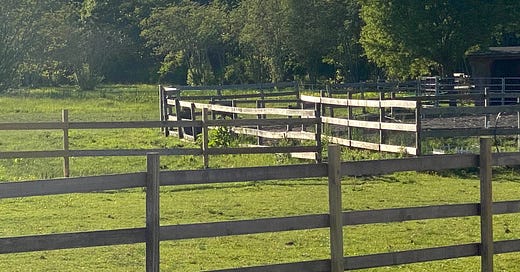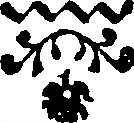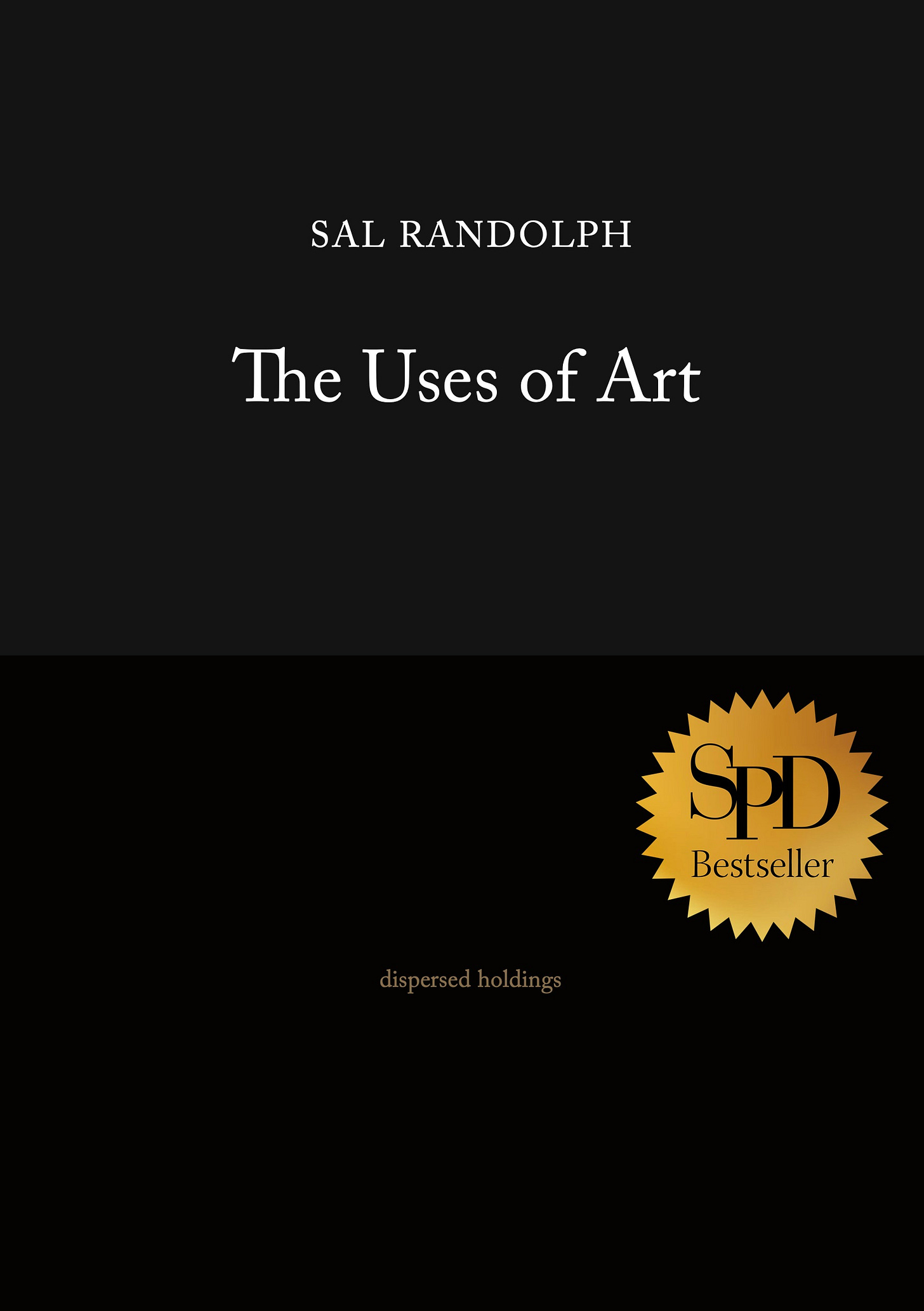Dear Friends,
I’ve been experimenting with more fiction. Here’s a very short story I wrote in one summer afternoon after visiting the site of an imagined pony rodeo.
— Sal
Pony Rodeo
“I don’t know how to do it,” Alice thought, as she looked down at the fabric in her lap. For a moment, she couldn’t even tell where one piece began and one ended. “I need help,” she said to herself, but there was no help at hand.
Alice was sitting on a daybed in a little cabin by the sea. It was afternoon, and the cool wind blew through, moving the curtains and moving against her bare arms. Her dog Sammie lay in the sun at the end of the daybed. It was an ordinary afternoon at the beginning of summer, quiet except for the sound of the waves. Every now and then the dog would lift her head to look out the screen door, then she would rest it again on her front paws.
The afternoon was coming to an end, the vacation was coming to an end. She had just started to feel the new rhythm of being in this place. “I don’t know how,” she said to herself again. She was working on what would be a stuffed horse, a pony, and she wanted to sew it by hand. It shouldn’t be that hard. In her mind there was a perfect pony, all of its proportions graceful and accurate. She had tried to draw it on to the fabric. “This should be funny,” she thought. She imagined standing at the small dining table, marking out the horse shape, laughing at herself where it went wrong. Where, exactly, should the seams go on a horse’s body? There should be music playing, and a tall glass of iced tea, or maybe some rosé, and the fullness of an afternoon that was much like the one before it and the one that would follow. She pictured a set of spoons, nestled into one another, a perfect row.
It was ridiculous to be so worried, so at a loss. It was an imaginary stuffed version of an imaginary pony, made for an imaginary child. It was just something to occupy her time here, a way of going-on-being, not some deity she should tremble before.
Earlier, she had walked up the hill where her street met a bigger street. Beyond was the road where the corral had been. She had turned back, and not gone to see it. The old hand-painted sign had been taken down years ago, the one that had said Pony Rides. The first time she had seen it she had read Pony Rodeo, and fallen instantly in love. The lassos! The barrel-racing ponies! The trampled earth and the smell of grassy manure. There was a joy in the idea of a pony rodeo that made her want to write country music and then dance in front of an audience in boots and a Texas hat.
How long ago was that? She had wanted to get in a car and drive out west. She had wanted to start one new life after another, dozens of them, but it was just a bright flash of a moment.
A dog was barking in the distance and Sammie began to pace the floor. “It’s just a barker,” Alice said to her. She looked back down at the fabric in her lap. The idea of doing what had to be done next irritated her. Why did everything have steps that had to be followed? Outside, the sun was stealing almost imperceptibly across the sky, changing feeling of the light. It was cooler than it had been a half hour ago. The wind was rising. Sammie lay on her favorite towel on the floor, closing her eyes and opening them again. The afternoon, of itself, required nothing.
Update
I originally wrote and published this as part of Tara Penry’s Virtual Memorial for Alice Munro. Soon after, we all learned about the abuse of Munro’s daughter, Andrea Skinner, at the hands of Munro’s husband. As time passes, and more of the story comes to light, it only becomes more heartbreaking and dismaying.
I’d love to hear from you! Let me know what you think of these or what they feel like.
Further adventures and new ways of seeing can be found in my book, The Uses of Art.
Artist Sal Randolph’s THE USES OF ART is a memoir of transformative encounters with works of art, inviting readers into new methods of looking that are both liberating and emboldening.
Dazzlingly original, ferociously intelligent.
— Michael Cunningham
A joyful, dazzling treasure-box of a book.
— Bonnie Friedman
Here’s a guide, to waking up, over and over again.
— Roshi Pat Enkyo O’Hara








I loved it. It was restful but not dull. Not at all dull! My favourite part is, I think, the dog lifting its head then settling it down on its paws again. I don't have a dog but it reminded me of how they act. Great observation. I'm also glad the Alice/Ann conundrum was a typo and that someone had the courage/kindness to point it out! Do write more, Sal, you have a good eye, and the patience that writing requires.
LOVE this. <3 <3 <3